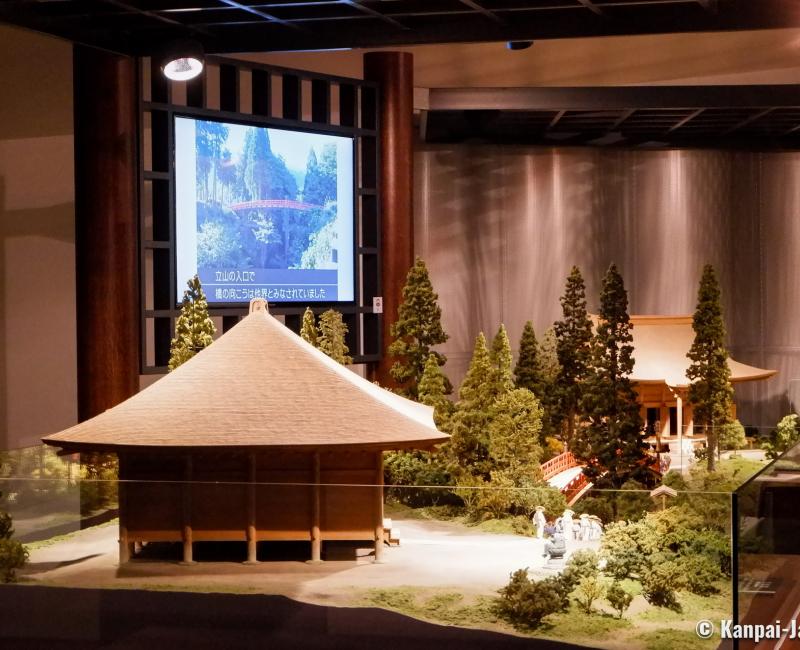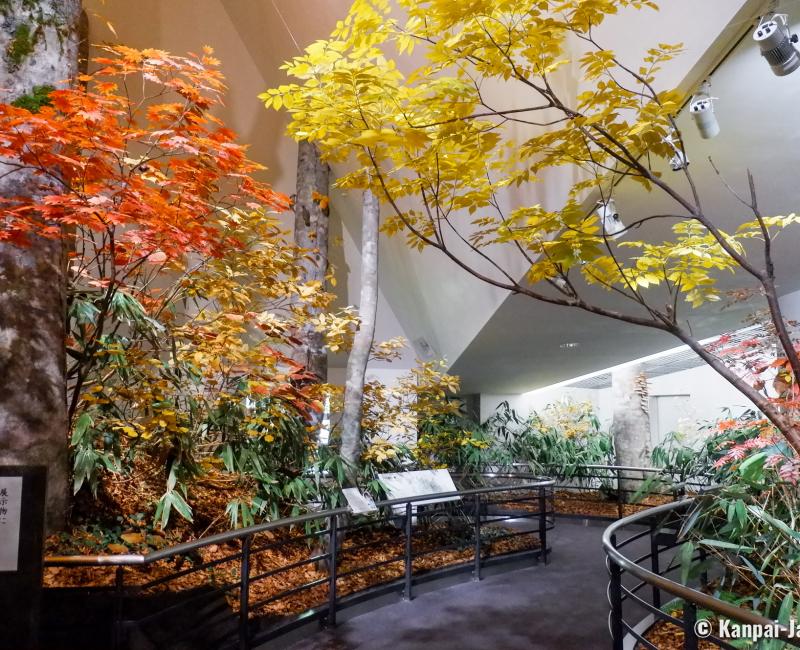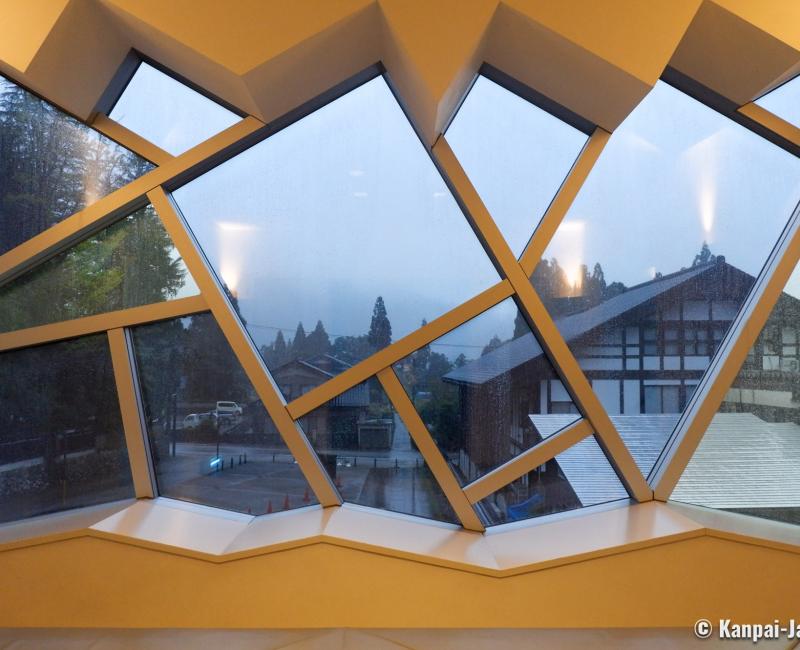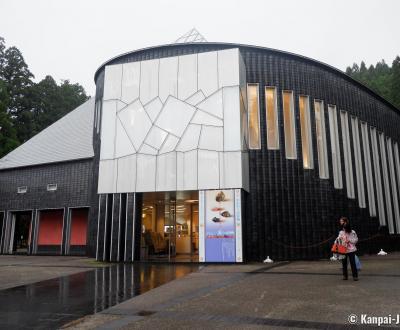Tateyama Museum of Toyama
Introduction to the Sacred Alpine Mountains
Tateyama Museum is located at the foot of the Tate Mounts in the Japanese Alps, in the south-east of Toyama City. The gallery uses educational exhibitions to show the area’s geological aspects, its biodiversity as well as its religious and cultural importance for Japanese people.
Inaugurated in 1991 Tateyama Museum’s main hall, the Tenji-kan (展示館), was designed by Arata Isozaki (1931 - 2022), a renowned Japanese contemporary architect and recipient of the prestigious Pritzker price in 2019. While lost in the mountains of Toyama prefecture, one feels privileged to be able to admire this architectural artwork of a contemporary and elegant conception.
Inside is displayed a highly informative exhibition about the Tateyama mountain range, divided into several great topics, with a broad range of interests:
- The mountain range’s geological formation,
- The region’s vegetation and wildlife; and,
- The Mounts Tate’s sacred and religious significance.
It is a good introduction before exploring the surroundings and hike the Tateyama Kurobe Alpine Route. Note however that signs are only in Japanese, and it is recommended to download the audio-guide in English on your smartphone 📱 (explanations provided on site).

At the gates of the Buddhist Paradise and Hell
One of the most important parts of the museum is certainly the one displaying artworks related to the myths surrounding the Tateyama mountains, especially the sumptuous and detailed traditional paintings on kakejiku (or kakemono) hanging scrolls.
These artworks named Tateyama Mandala date back to the Edo period (1603-1868) and illustrate the legends surrounding the area. One of the most important is the story of a local young man who was actively chasing a bear. He managed to hurt it with an arrow and tracked it thanks to its blood trail from down the valley to up at the tops of Mount Tate. Catching up with the animal, he saw it taking shelter in a cave and followed it. Once in the cave, he could not find the bear that had vanished, in its place was Amida Buddha and the deity Fudo Myoo who requested him to show this way to the Tateyama mountains to everybody.
Other remarkable elements are on the paintings, such as pictures of Lake Chinoike and its red water, a natural site that can be discovered on the Murodo Plateau.
Its name literally means "pool of blood" and evokes since the Edo period the Hells and the belief that this marshland is a gate to the darkness. It is also said that the Pure Land paradise, where Amida reigns, can be found at the summit of the mountain.
Some of the museum’s statues picture the Onba-sama (Tateyama no Onbasama, 立山のおんばさま) that were female deities worshiped in the Middle Ages in the area. Clad in white traditional clothes symbols of purity and rebirth during the rite of passage of Nunobashi bridge, their appearance is nonetheless frightening, reminding of the yokai monsters.
Tateyama is a sacred mountain since the 8th century and strongly connected to the Shugendo. Established in the middle of the Heian period (794-1185), this religion with esoteric Buddhism prominence is a syncretism that also takes inspiration from Shinto, animism, and Taoism. The artworks briefly described above are illustrations of it.

In the heart of a wild and respected nature
The third floor of the museum is occupied by dioramas reproducing the Tateyama Mountains’ vegetation and wildlife. One walks in a beech forest of the Bijodaira humid zone, represented here with their autumn 🍁 colors. A bear scratching a tree was also pictured in the scenery to make it as realistic as possible.
A little bit further, a rock display is awaiting the geology and geography passionate. Great model scales and pictures give a large view on the surroundings’ mountain range and one can easily picture oneself treading the hiking trails and exploring this beautiful and steep nature.

Visit the other cultural sites linked to the museum
In addition to the main building Tenji-kan, the Tateyama Museum includes other sites encompassed in the same perimeter, such as:
- Oyama-jinja shrine that gives protection to hikers before they start to climb,
- The red bridge Nunobashi, famous in the area for being the passageway in a purification ceremony named Nunobashi kanjo-e that takes place every 3 years. A procession of women pilgrim clad in white crosses the bridge, a symbol of rebirth and of the passage of the soul in the Buddhist paradise after death,
- The Yobo-kan, a room with a large 15 meters screen for videos about the sacred sites of the area and its biodiversity.
- The Mandala Yuen Park that appeals to visitors by recreating the legendary world of Tateyama with artistic installations, sound and light displays and even the diffusion of odors.
The Tateyama Museum of Toyama in an interesting visit for travelers who stay overnight and have some free time, or for those who are looking for an indoor activity when the weather is bad.


